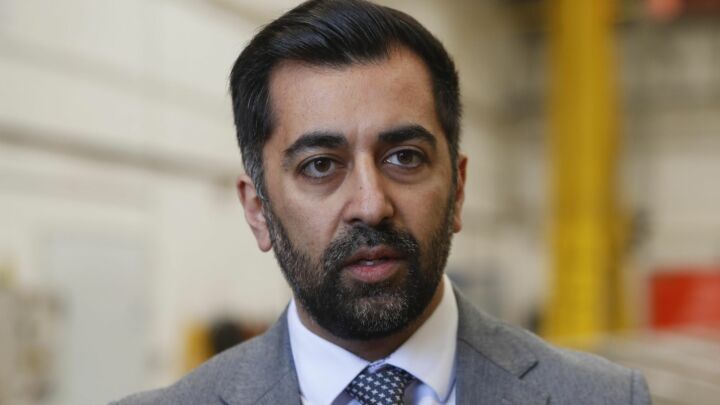Offside
'Post foot-and-mouth, Britain is now in the grip of a new epidemic: post-Dome lack-of-nerve syndrome. The first casualty is the new national stadium at Wembley.'

Foot-and-mouth disease may be under control but Britain is now in the grip of a new epidemic: post-Dome lack-of-nerve syndrome (a new medical term for what used to be known more prosaically as cowardice).
The first casualty of the affliction is the new national stadium at Wembley.
From the speed at which it spread throughout our national institutions, it seems that the disease is highly contagious. Its main symptom is the failure to take responsibility. First, the City bankers refused to fund the new stadium. Then the Football Association (FA) decided that it could not risk underwriting the project. Finally, the government, believing that football is awash with money, refused to stump up the cash. ‘Wembley stadium is an FA project, not a government project’, insisted Tony Blair.
Few football fans will lament the demolition of the old Wembley stadium. The amenities were dreadful, the spectators were too far from the pitch to generate an atmosphere, and the sight lines were often terrible. I once watched a First Division play-off final with a pillar obscuring my view of one of the goals.
Sir Norman Foster’s design for a state-of-the-art 90,000-capacity replacement stadium, with a retractable roof straddled by a giant steel arch, looked fantastic. At last London would have a football stadium to rival the Stade de France in Paris, the Nou Camp in Barcelona, and the Amsterdam Arena.
Or so I thought. Now it looks as though Sir Norman’s plans may never see the light of day. Instead, a ministerial task force headed by Jack Straw (God help us!) has been asked to ‘look at alternative solutions’. It is thought that the government may settle for a cheaper ‘no-frills’ stadium, built on the current Wembley site. Culture secretary Chris Smith has even suggested the refurbishment of the old stadium as a possible option. Perhaps he should enlist the Changing Rooms team who, with the aid of some MDF, laminate tiles and a lick of paint, could undertake a cheap and cheerful makeover.
‘We want to play our part as the government in securing a good, affordable and sustainable national stadium for England’, declared Chris Smith. When a government minister adopts the dreary, penny-pinching language of the ‘best-value’ auditor, one fears the worst.
No national sports stadium is ever built without attracting controversy. The ‘spend-it-on-the-NHS’ brigade were bound to complain about the construction costs, which would invariably escalate – the final cost of the Stade de France and the Sydney Olympic Stadium were far greater than originally planned. Traditionalists were always going to argue for the preservation of the tacky faux-grandeur of the twin towers. Provincialists would inevitably moan that the stadium should not be located in the capital.
Political will was always going to be necessary to face down the critics and see the project through to completion. The resulting fiasco is a direct consequence of the government’s evasion of political responsibility.
The FA is now questioning whether England really needs a national football stadium. It is a bit like saying ‘Does France really need the Eiffel Tower?’. A national sports stadium, like any great public building, is not strictly ‘necessary’, and is seldom economically viable.
Great feats of architecture express the ambition and power of those who build them. By the same token, the derelict shell of the old Wembley Stadium is the perfect monument to a government still traumatised by the Dome fiasco.
To enquire about republishing spiked’s content, a right to reply or to request a correction, please contact the managing editor, Viv Regan.








Comments
Want to join the conversation?
Only spiked supporters and patrons, who donate regularly to us, can comment on our articles.